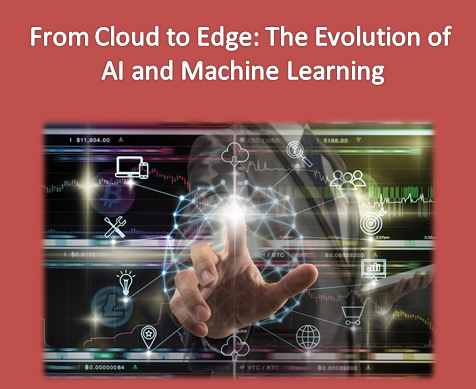Overview
The Edge computing implements more advanced processing and within the local sensor network. This is minimizing the amount of data that has to pass through the gateway to the cloud and vice versa. This directly the reduces costs and frees up bandwidth for additional nodes if needed. The Transferring less data per node can also reduce the number of gateways required to collect and transfer the data to the cloud. The Another technology trend enhancing edge computing is artificial intelligence. The Early AI services were primarily cloud and based. The innovations have been made and algorithms have become more efficient and AI has very quickly moved to terminal nodes and its use is becoming standard practice. A notable example is the voice assistant Amazon Alexa. The Recognizing and waking up when hearing the trigger word Alexa is a well and known use of Edge AI. This minimizes activation latency to provide the best and possible user experience.
Evolution of Artificial Intelligence
The artificial intelligence has been around for millennia and its true potential was not explored until the 1950s. A generation of scientists and a physicists and intellectuals came up with the idea of artificial intelligence also but it was Alan Turing which is a British politician who suggested that humans should solve problems and make decisions based on available information and reason. The difficulty of the computers was a major obstacle to expansion. The AI research continues and the thrives in todays world. In the field of artificial intelligence the development Europe is the largest and most diverse continent with a significant degree of international cooperation. The India is the third largest country behind China and the US with AI search results. The AI is used for so many things and holds so much promise that it is hard to imagine the future of our business without it. The AI can collect and organize vast amounts of data to make the inferences and estimates that exceed human ability to calculate manually.It has been also suggested that we are on the brink of a fourth industrial revolution that will be distinct from the three. The Smarter technology in our factories and workplaces and along with connected devices that communicate the visualize the entire production process and make autonomous decisions are just a few of the ways the industrial revolution will drive business improvements.
Evolution of Machine Learning
The data acquisition and the processing. While the large companies certainly have large datasets analysts or data engineers need to clean the data to make it usable and checking and consolidating duplicates from different sources and normalizing metrics the designing and verifying functionality. In most companies and engineers use a combination of SQL or Hive queries and Python scripts to aggregate and format up to millions of the data points from one or more data sources. This often requires several days of frustrating manual work. This is likely to be somewhat repetitive work and as the many companies the process is decentralized and data scientists or engineers often manipulate the data using local scripts or Jupiter notebooks.



